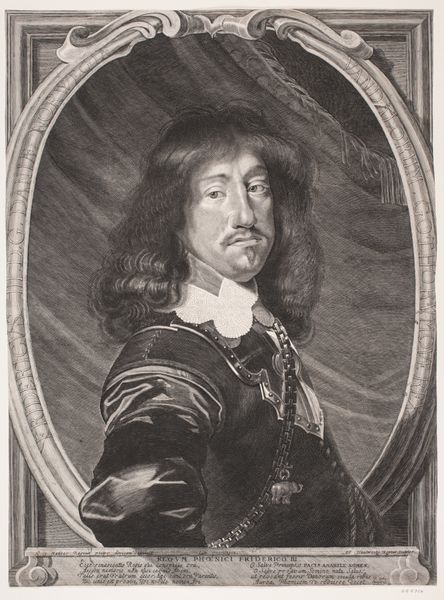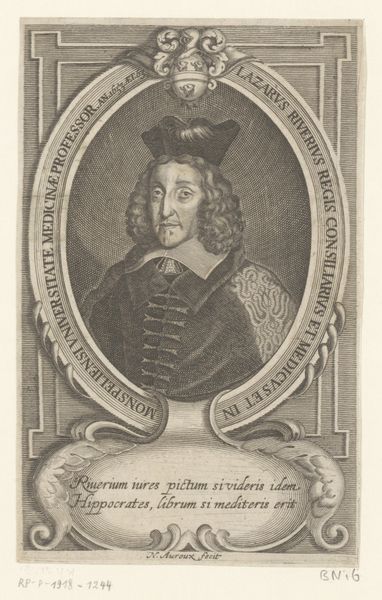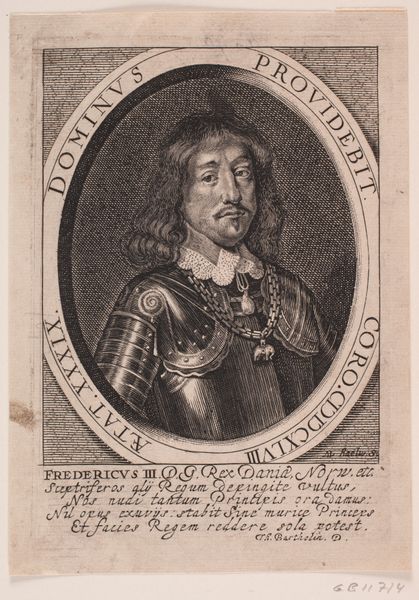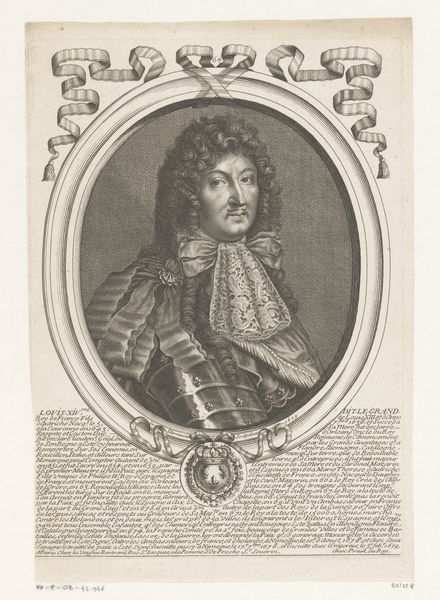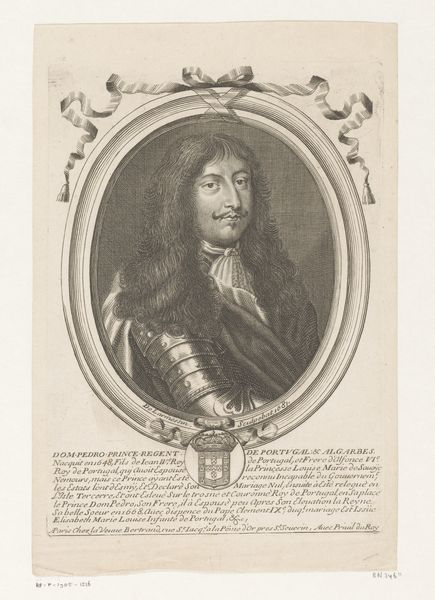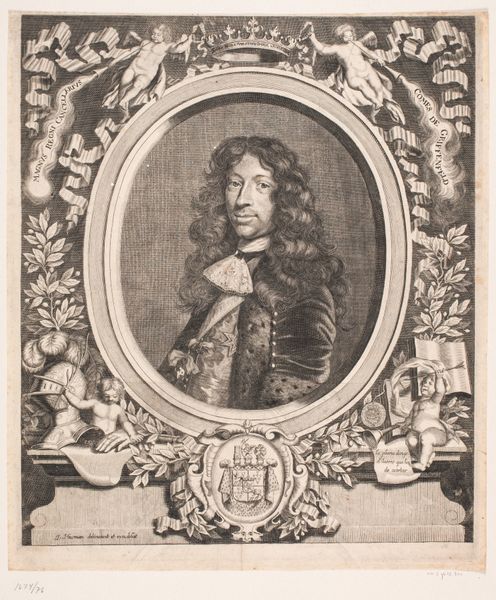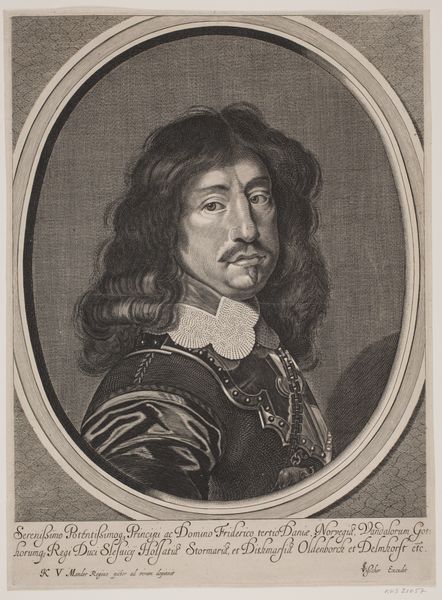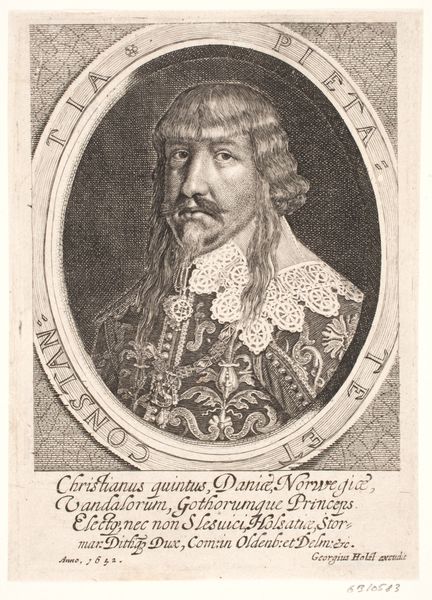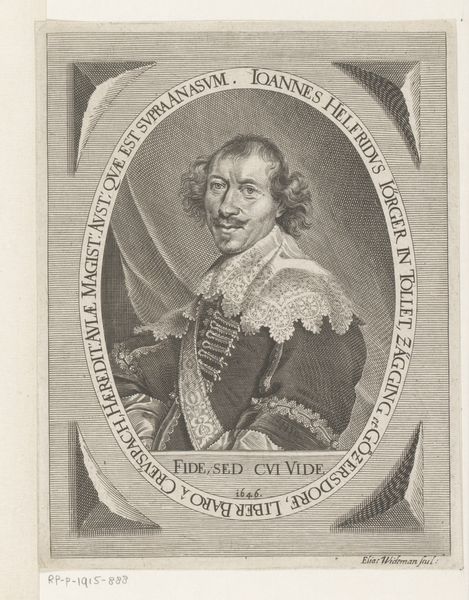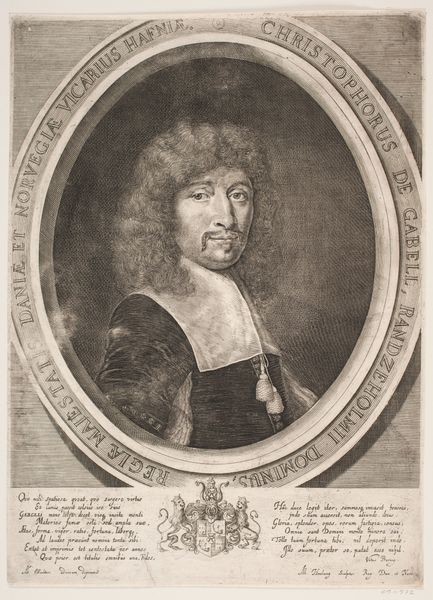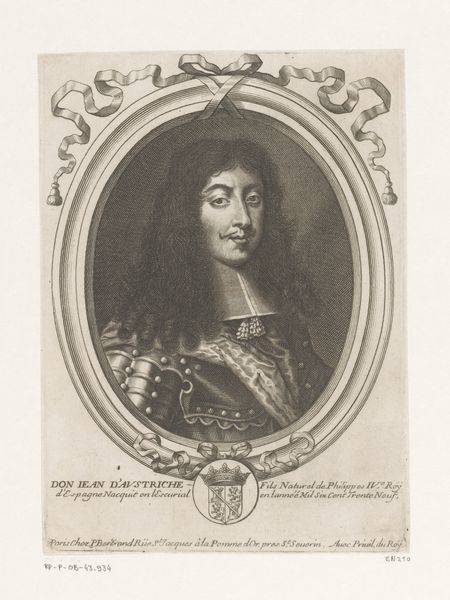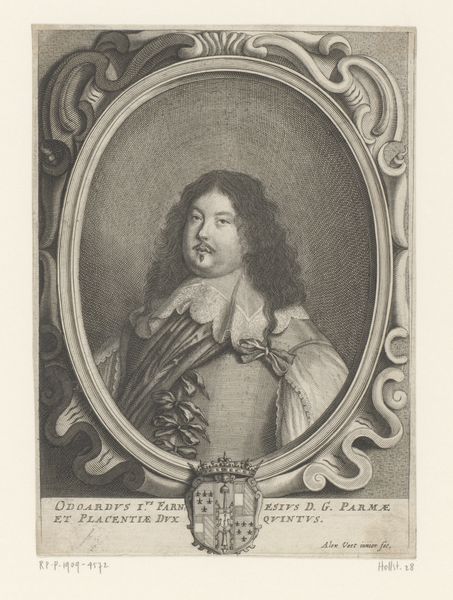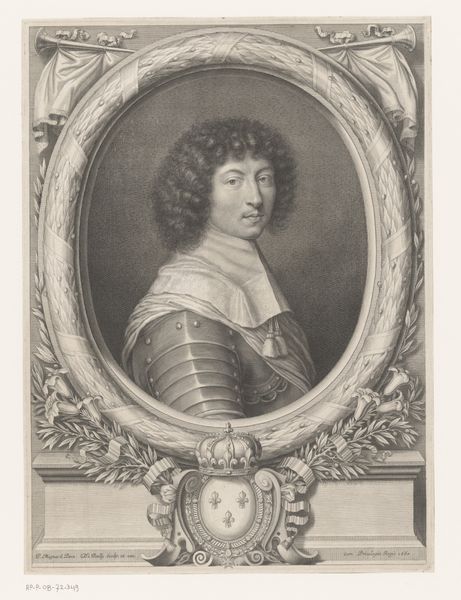
print, engraving
#
portrait
#
baroque
# print
#
history-painting
#
engraving
Dimensions: 241 mm (height) x 155 mm (width) (plademaal)
Curator: This is Albert Haelwegh's engraving of Frederik III, dating back to 1652. You'll find it in the collection of the SMK, the National Gallery of Denmark. Editor: The stark contrast between the figure and the background is immediately striking. And there’s something both confident and a little melancholy in the subject’s gaze. Curator: Absolutely. Haelwegh's choice of the Baroque style perfectly captures the period's sensibility. It was produced at a time when Frederik was trying to consolidate absolute power and the imagery played a crucial role. Think about the institutions that celebrated him—how he leveraged his own image in society. Editor: The level of detail achieved through engraving is truly remarkable. Look at the intricate lacework of his collar and the textures within the curls of his hair. How the artist conveys a three-dimensional feel using a primarily linear medium. Curator: And notice his armour. It represents military might, important because of the historical backdrop. The print speaks to the fraught political environment of mid-17th century Denmark-Norway and Frederik's attempts to expand royal power. Editor: The oval frame containing the portrait creates an interesting focal point. Its hard border directs your gaze to the detail in the rendering of the face while giving the piece a certain sense of formality. And what is that structure— a castle?—shown behind him? Curator: I think what you are seeing is not one single building, but likely the depiction of Copenhagen, acting to highlight the location of Frederik's power. The context of Frederik’s reign makes these visual decisions especially potent. Engravings like these spread his image widely at a time of internal and external conflict. Editor: Studying the line work closer reveals how carefully constructed it is, not just for realism, but also for mood. The deeper the shade the sharper it's been cut to create light and shadow for visual effect. Curator: The work is interesting both as a document of artistic technique and as a historical object, don’t you think? Understanding the social function of art—its place in historical narratives, makes an encounter with Haelwegh’s work all the more meaningful. Editor: Indeed. Appreciating the formal techniques enhances the ability to extract meaning from such a unique historical record.
Comments
No comments
Be the first to comment and join the conversation on the ultimate creative platform.
